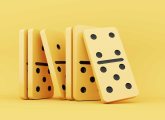The EYFS Profile may contain ambiguities regarding what we should be expecting gifted children to achieve in mathematics, but there are simple ways to ensure that groups of every ability are challenged, says Judith Twani…
Moderation of the EYFS Profile always has its challenging moments and this year was no exception, particularly as we had to familiarise ourselves with new exemplification and goals. In one school we were discussing whether or not a child was ‘exceeding’ in Shape, Space and Measures. The description of exceeding did not give much information to help us:
Shape, Space and Measures – ‘Exceeding’: Children estimate, measure, weigh and compare and order objects and talk about properties, position and time. With this in mind I felt fairly confident when I said that if a child could use a ruler and accurately say how many centimetres long something was then he or she would probably be ‘exceeding’. Imagine my shock, therefore, when I discovered that one of the examples in ‘expected’ was of a child measuring with a ruler and saying “the keyboard is 23 centimetres”!
Investigate further and we seem to be experiencing a case of expectation creep. when we direct teachers to look at the Level 1 National Curriculum descriptors in Number, we discover that the Early Learning Goal is generally more challenging. In fact, the Early Learning Goal for Number now seems to have more in common with Profile point 9
Point 9 Numbers as labels and for counting & Calculating (EYFS Profile 2008)
The child recognises, counts, orders, writes and uses numbers up to 20… uses a range of strategies for addition and subtraction, including some mental recall of number bonds
Early Learning Goal for Number (‘Expected’, 2013)
Children count reliably with numbers from one to 20, place them in order and say which number is one more or one less than a given number. Using quantities and objects, they add and subtract two single-digit numbers and count on or back to find the answer. They solve problems, including doubling, halving and sharing.
So, what we now see as being ‘expected’ was formerly the domain of the gifted and talented children. And the new ‘exceeding’ for Number has become: Children estimate a number of objects and check quantities by counting up to 20. They solve practical problems that involve combining groups of 2, 5 or 10, or sharing into equal groups.
So within this confusion what should we be doing? How can we ensure we are providing appropriate challenge for those children who demonstrate ‘exceedingness’ in maths, when we are not fully sure what it looks like? Happily, there are some general principles that can support us in this endeavour…
1. Recognise the influence of the home on ‘early acceleration’. What you observe may be as a result of well-meaning parents who have been teaching the children at home using commercially produced workbooks or by giving them pages of sums to complete. This ‘early acceleration’ does not always indicate that a child will continue to exceed in these areas throughout school.
2. Recognise the children who enjoy playing with larger numbers. They take delight in phone numbers, house numbers and registration plates on cars. They find words such as ‘million’ and ‘infinity’ fascinating, and will want to talk to adults about this.
By way of example, a three-year-old in a preschool was more interested in what I was writing than in the opportunities he was provided with, and so he sidled up to me and told me he knew how to write. I handed him my pen and he began to write large numbers on my page starting with the number 110, but writing it as 100 10. A lively discussion ensued about ways to write numbers, and I told him all about hundreds, tens and units. Following several more large numbers he proceeded to write zeroes around the edge of the page and announced “That’s a million!” When I asked if he could count to a million he solemnly declared that it would take him a “very, very, very, very, very long time!” He later told me that “infinity means that there is no end”. Imagine his frustration when he started Reception and was doing number recognition to 10! These children need an adult who will engage in risky mathematical talk with them.
3. The environment plays an important role in stretching successful learners. Setting up a role play classroom provides an opportunity for children to become the teachers and demonstrate their own areas of expertise. I once overheard a boy telling his friend that he was going to teach him algebra, and watched him demonstrate this on the whiteboard in the role play classroom. He wrote a+a+a=3 and explained that a=1. He rubbed this out and wrote a+b=3 and announced that in this one b=2. This is beyond what we would expect in Reception, but the environment opened up the possibilities for it to take place.
4. It is important to have a range of open-ended resources available. These resources provide the opportunity for children to solve real problems and develop their critical thinking. The trays from inside boxes of chocolates or biscuit tins provide an unusual sorting tray. Add some natural resources such as stones, shells, pine cones and conkers, and the children will engage in their own sharing, sorting and matching activities.
5. Real-life problems are ideal for providing appropriate challenges. Schools often collect the vouchers from supermarkets that can be redeemed for equipment. These need counting and one of the class ‘experts’ could be in charge of counting these in tens and submitting them every week. Calculations based on registration and dinners could be given as a real-life challenge. How many hot dinners? So how many will be packed lunches? If 24 children are here today, how many are away? Provide a whiteboard for them to record their findings.
6. Continue to use their fascinations and curiosity as a basis for the challenges offered. I remember my own son becoming disillusioned with the ‘gifted and talented’ programme he was participating in. The additional opportunities he was offered did not particularly interest him and certainly did not enhance his strengths. It is vital that the opportunities offered are linked with existing interests or new experiences that will stimulate children’s curiosity.
7. Model the language of thinking and enquiry. The National Strategies document Finding and exploring young children’s fascinations – Strengthening the quality of gifted and talented provision in the early years (DCSF 2010) lists some examples, and clear links can be seen between these and the Characteristics of Effective Learning and Teaching…
● Taking risks – feeling comfortable with not knowing and embracing the opportunity for new learning that this provides: Shall we see what happens if…?
● Rising to new challenges – viewing ‘being stuck’ as a valuable learning opportunity and showing that other people, books and ICT can all be valuable resources for moving forward in our thinking: I don’t know how to do that. Shall we go and find out?
● Being willing to share and make mistakes – demonstrating that this is an important part of the learning journey and not something to avoid: I’ve gone wrong here. How can I do it better?
● Being imaginative – there is more than one way of solving a problem; playing with different perspectives and lines of enquiry: Can we do that another way?
● Being innovative – modelling ‘possibility thinking’ and opportunities for new connections to be made: What will happen if we…? Do you remember what happened when we…?
● Immersion – getting deeply involved in the learning alongside the children, seeking their contributions with genuine interest in their ideas and thought processes: How did you manage to do that?
Rather than focusing on the actual content of what it means to be ‘exceeding’ we need to pay attention to the opportunities we offer to all children in order to provide them with what they need. The aim is that they become life-long successful learners and not simply those who can achieve certain elements of an assessment.
Judith Twani is a senior consultant and development manager with Early Excellence.

Mathematical development – fun with doubles
Editors picks

Outdoor maths – Eco-friendly ideas for cold days
Editors picks
